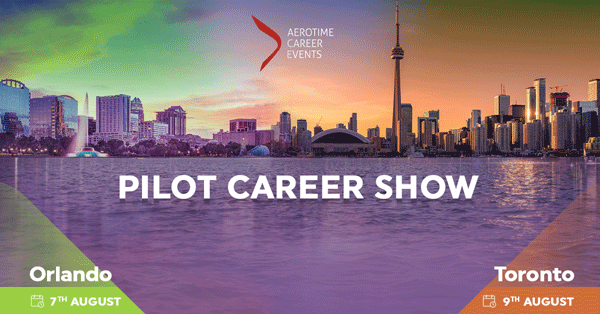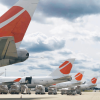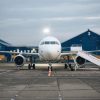
The looming dearth of pilots threatening global aviation is no news, however, the ratio it affects airlines differs from region to region, and so do subsequent measures taken to curb the shortage. Lack of pilots in North America is currently having the most negative impact on smaller regional airlines and Air Force. The scope of the problem is about to get enormous, though: North America takes the third position in the list of regions where the magnitude of the problem is the highest, trailing behind only Europe and Asia-Pacific.
American pilots still face some contextually-determined industry problems. For instance, the first officer in the US cockpit needs to wait for more than 15 years before (s)he moves to the left seat, while the same procedure only takes 1 or 2 years in certain parts of Asia.
Alarm signs of pilot shortage have started reaching Canada as well. Indicators of a serious pilots lack are resulting in growing competition for staff among northern airlines and national companies, forcing regionals to cut back service.
As the problem captivates new territories, new pilot recruiting strategies that work become the top priority. Here is the compilation of the most appealing strategies in North America so far.
Airlines are actively hiring
Starting with the most obvious solution, American companies are diligently making investments into workforce. Delta Air Lines announced a broad hiring campaign on July 8, 2018, intending to bring in 8000 pilots over the next decade.
Being the second largest US airline, Delta don’t just offer current crew a leave to attend flight school, but has also launched several conditional work opportunities for students of certain flight schools.
American Airlines also announced its own peculiar recruitment program this year. After opening Cadet Academy in 2018, they started providing loans to aspiring students as part of a strategy to help cadets finance their training.
Focus on next generation: getting young people interested in flying
American Eagle, Delta Express, Republic Airline, and US Airways are constantly sending their employees to universities, schools, flight schools and aviation events to present the perspectives of starting a career in aviation.
The underlying reason for this is that hiring new pilots is becoming quite tricky. Romanticization of a pilot profession is wearing away, revealing bottlenecks of the industry, such as heavy schedules and instability. Airlines are challenged to pay more serious efforts to get new candidates interested and make the profession more attractive.
Airlines use social media to launch their recruitment campaigns
Airlines’ marketing policies and advertising through social media has become one of the main steps taken to wangle pilots these days. Major airlines often prefer to invest in branding instead of raising pilots’ salaries, and they have a point, as this decision might help them attract younger generation of candidates. Florida International University research suggests that young people, representing Millennials generation, would rather prefer to work for an airline that is more acknowledged and “meaningful” instead of working for one that is less known, but offers a larger wage.
Many airlines in America created their first accounts just to establish presence in social media. But now it is becoming an integral part of not only airlines’ customer services, but also means to recruit new talents. More than 96% of airlines are now using social media in online recruitment. Companies like Hawaiian Airlines, Alaska Airlines, JetBlue actively use Twitter, Facebook and Youtube accounts to inform about their newest recruitment opportunities.
Reaching to minorities to achieve balance
In both North America and Canada special measures are taken to get women interested in flying. Events like “Girl in aviation day”, organized by Women in Aviation – a non-profitable organization based in Ohio, take place all over the world, aiming to bring information and passion to all women and girls who are considering a flying career.
A conceptually similar event “Girls Take Flights” has been annually organized in Oshawa, Canada, for 5 years already. The event is organized in a conference format, inviting aviation experts and professional pilots to share knowledge and break the existing industry misconceptions. But more importantly, it also offers flight training scholarships and free flight lessons.
Delta Air Lines works in partnership with professional associations including Women in Aviation International, the Organization of Black Aerospace Professionals, and the National Gay Pilots Association in attempts to develop better recruitment strategies, avoid workforce disbalance and conjointly reach a wider scope of potential candidates.
Special events to provide job and networking opportunities
Roadshows are other means for airlines to meet candidates. However, they have limitations when looked at through pilots’ perspective as in a hunt for job they need to wait for each airline to organize the roadshow. Therefore, the process of a job search can become very time-consuming.
Events like Pilot Career Show aim to make hiring procedure easier and more effective, saving a lot of time for pilots. The show gathers leading employers together to introduce their terms, requirements and benefits, and provide a number of opportunities for pilots to choose from. It is equally beneficial for airlines and recruitment agencies. Because the event usually gathers record numbers of pilots, employers are given an impressive pool of candidates to choose from.
Pilot Career Show, which will take place in North America for the first time this year is to be held in Orlando and Toronto, on August 7 and 9, 2018, respectively. The event will serve as a platform to bring together major airlines and professional pilots, searching for worthy job opportunities. Attendance is free, but requires preliminary registration.
Register here: https://www.pilotcareershow.com/





